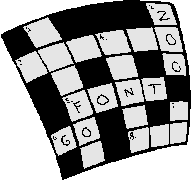|
LIFE SCIENCE |
Chapter 4
____________________ –structure in a cell’s nucleus that contains hereditary material
____________________ –cell process in which the nucleus divides to form two nuclei identical to each other, and identical to the original nucleus, in a series of steps
____________________ –new diploid cell formed when a sperm fertilizes an egg; will divide by mitosis and develop into a new organism
____________________ –ribonucleic acid; a type of nucleic acid that carries codes for making proteins from the nucleus to the ribosome
____________________ –deoxyribonucleic acid; the genetic material of all organisms; made up of two twisted strands of sugar-phosphate molecules and nitrogen bases
____________________ –section of DNA on a chromosome that contains instructions for making specific proteins
____________________ –cell whose similar chromosomes occur in pairs
____________________ –cell that has half the number of chromosomes as body cells
____________________ –reproductive process that produces four haploid sex cells from one diploid cell and ensures offspring will have the same number of chromosomes as the parent organisms
____________________– a type of reproduction-fission, budding and regeneration-in which a new organism is produces from one organism and has DNA identical to the parent organism
____________________ –haploid sex cell formed in the male reproductive organs; in humans, male reproductive cells produced in the testes
____________________ –haploid sex cell formed in the female reproductive organs
____________________ –any permanent change in a gene of chromosome of a cell; may be beneficial, harmful, or have little effect on an organism
____________________ –in sexual reproduction, the joining of a sperm and egg
____________________ –a type of reproduction in which two sex cells, usually an egg and a sperm, join to form a zygote, which will develop into a new organism with a unique identity
